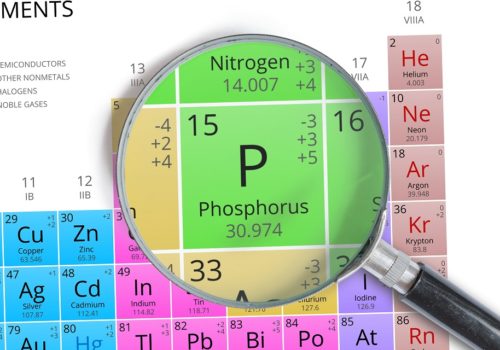5 Tips to Lower Phosphorus Levels

Phosphorus is a mineral in the body that helps build strong bones, aids in metabolism, and helps muscles and nerves function properly. The kidneys and digestive tract regulate phosphorus levels in the blood so that it does not get too high or low.
Chronically elevated blood phosphorus levels can weaken the bones and cause calcium to deposit in blood vessels, arteries and organ tissue. This decreases blood flow in the body, which can cause poor wound healing and tissue or organ death.
Maintaining blood phosphorus levels within the recommended range is particularly important for anyone with chronic kidney disease (CKD). Why? Because CKD is the number one reason for high phosphorus levels in the blood, also known as hyperphosphatemia. Other causes include diabetic ketoacidosis, injuries (specifically to muscles), hypoparathyroidism, high vitamin D levels and phosphorus-containing laxatives.
5 Phosphorus Lowering Tips
Follow these five simple tips to help keep your blood phosphorus levels within the recommended range.
Avoid foods that contain phosphorus additives.
Phosphorus additives, also called phosphate additives, are added to foods for various reasons including preservation, mouthfeel or texture or vitamin or mineral fortification. The body absorbs nearly 100% of the phosphorus from phosphorus additives, compared to only 40 to 60% of naturally-occurring phosphorus.
Foods that contain phosphorus additives include baking mixes, baked goods, dark colas, some bottled or canned beverages, sports drinks, powdered drink mixes, frozen meals, processed meats and many calcium-fortified foods and beverages.
To know if a food contains phosphorus additives, look for ingredients listed on the food label that contain the word “phos.” Examples include phosphoric acid, trisodium phosphate, dicalcium phosphate, and trisodium phosphate.
Fast foods and restaurant foods should also be limited because they often contain phosphorus additives. Ask your dietitian for better options when dining out or use the DaVita.com Dining Out Guides.
Limit high-phosphorus foods.
Foods that naturally contain phosphorus include dairy products, nuts and seeds, legumes, chocolate, organ meats, and wheat and oat bran. These foods do not need to be completely avoided but rather consumed in moderation.
For optimal phosphorus control, limit dairy products to one serving per day. The amounts of other high-phosphorus foods you can consume varies based on your blood levels, calorie and protein needs, and if you are taking phosphorus binders. Talk to your dietitian for more individualized recommendations.
Take your phosphorus binders as prescribed.
Phosphorus binders are pills that should be taken with all meals and snacks. They help lower blood phosphorus levels by binding to the phosphorus in food so that it is excreted in the gastrointestinal tract instead of absorbed into the blood.
Your nephrologist may prescribe phosphorus binders if your phosphorus level is high. There are many types of phosphorus binders that vary in strength, side effects and cost. Your nephrologist and dietitian can work with you to find the type that is best for you.
Phosphorus binders work best if they are taken right before eating or with the first few bites of food. Your nephrologist or dietitian will tell you the number of binders you should take with your meals and snacks based on your diet and blood phosphorus levels.
Promote bowel regularity.
Maintaining regular bowel movements is particularly important for phosphorus control if you are taking phosphorus binders. People with CKD are prone to constipation due to fluid and dietary restrictions that limit intake of high-fiber foods such as fruits, vegetables and legumes. If you are constipated, ask your nephrologist or dietitian about starting a stool softener, laxative or fiber supplement. Other tips that can help with constipation are eating more low-potassium fruits and vegetables, and walking or exercising daily (if approved by your doctor).
Attend your dialysis treatments.
Dialysis helps remove phosphorus from your blood. If you receive in-center hemodialysis, be sure to attend all of your treatments for the amount of time your nephrologist prescribes. If you need to miss a treatment, work with your care team to re-schedule it for the next day.
Check out these articles for more information:
- Healthline.com: Hyperphosphatemia
- DaVita.com: Hidden Phosphorus In Your Diet and How to Control It
- DaVita.com: Top Low-Phosphorus Food Choices for a Kidney Diet
Try these low-phosphorus recipes from DaVita.com:

Additional Kidney Diet Resources
Visit DaVita.com and explore these diet and nutrition resources:
- DaVita Food Analyzer
- DaVita Dining Out Guides
- Today’s Kidney Diet Cookbooks
- DaVita Kidney-Friendly Recipes
- Diet and Nutrition Articles
- Diet and Nutrition Videos
- Kidney Smart® Virtual Classes
This article is for informational purposes only and is not a substitute for medical advice or treatment. Consult your physician and dietitian regarding your specific diagnosis, treatment, diet and health questions.

Recent Comments